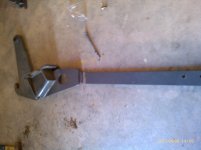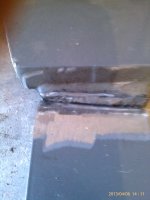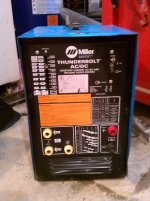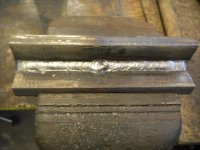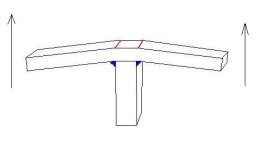You are using an out of date browser. It may not display this or other websites correctly.
You should upgrade or use an alternative browser.
You should upgrade or use an alternative browser.
Looking for tips
- Thread starter DarrylH20
- Start date
/ Looking for tips
#1
Shield Arc
Super Member
Grind all the broken weld off. Grind a pretty good bevel on the longer piece, and use some 1/8-inch 7018, looks like it will take 3-passes, (or more) all the way around. I would try to have my stops in the center, not near the edge. Maybe this picture will make it more clear about stopping in the center, not on the edge.
Attachments
I get what you are saying and thank you. how many amps. should I use. And when they say reverse polarity on DC does the electrode plug in - and the ground go in +. I am all new to this. Its 1/2 steel and is this welder good enough? thanks again
rwork
Platinum Member
No doubt that welder is more than "good enough"! And you got that for 75 bucks?!?! That was a GIFT!
Shield Arc
Super Member
You want the stinger, (electrode holder) to plug into the + side. The ground, (work) clamp will plug into the - side. Roughly 120-AMPs should be fine if welding in the flat position. I've never used one of those welders, seen them is all. They are suppose to be very good machines! Remember when doing multiple passes you want to keep everything really clean! Chip all the slag out, then wire brush real good. Make sure you fill in the craters well. Craters are a notorious weak spot in a weld. You'll want to monitor the alignment of this frame. When the welds cool they will pull. See in this picture the blue welds pulled the square tube down? To correct you would have to put heat on top, (red lines) of the square tube to correct the pull. But in this case you would add weld on the other side.
Attachments
Thanks, what do they go for new? I have been practicing with it and my beads are coming out decent. A lot better than they use to. I find welding on dc is easier than ac i just dont know the difference between reverse and straight polarity. I have been learning alot reading from you guys and thank you all.
Shield Arc
Super Member
You're welcome.:thumbsup:
Arc weld
Veteran Member
It wouldn't be a bad idea to run your first pass, in the groove, with a 1/8" 6010 or 6011 to get the most penetration and then fill it up with 7018. Nothing wrong with using a grinder to completely clean out all the slag from the previous pass. Also make sure to clean the sides of the welds to make sure you have good fusion at the edge. 1/8" 6010/11 will run around 100/110 amps and 1/8" 7018 around 130 amps but you can't go buy the dial on the machine. Get some scrap pieces and if at all possible, grind a similar V to practice on. DC is way better than AC. Electricity, at least referring to DC on a welder, flows from negative to positive. That's why hooking the stinger on the - is referred to as straight polarity and on the + is referred to as reverse polarity. One of the things they tell you to remember in school is DCRP=EP, Direct current Reverse Polarity equals Electrode Positive. 6010 runs DCRP but just to see the difference, try it on DC straight polarity or AC. 6010 is known as a polarity check rod.
